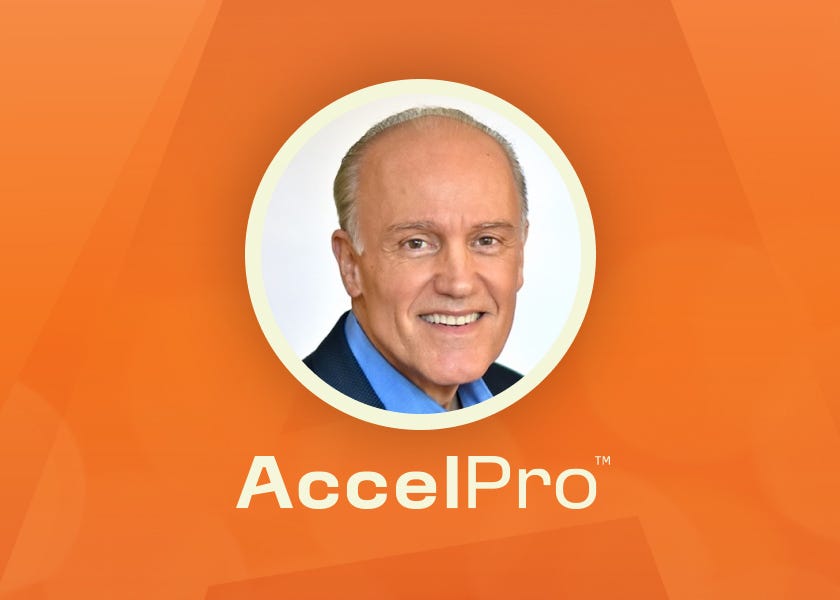Listen on Apple Podcasts, Spotify and YouTube.
Welcome to AccelPro IP Law, where we provide expert interviews and coaching to accelerate your professional development. Today we’re featuring a conversation with James (Jim) Pooley of James Pooley, PLC.
Pooley is a veteran Silicon Valley trial lawyer with deep knowledge of trade secrets and patents who spent five years as manager of the international patent system (PCT) for the World Intellectual Property Organization (WIPO) in Geneva.
In this episode, we discuss trade secret disputes, how the rise of work-from-home and hybrid work have changed how companies approach trade secrets, differing approaches to trade secrets in different jurisdictions, and more.
“Recent statistics show that, during an average career, an employee will move 11 times to different companies. So the dynamic of this environment is one of constantly figuring out what the threats are to the integrity of the information that you have and the people that you have to share it with,” Pooley explains.
“We are so far beyond the old cottage system of having just a few people who work on producing products. We now have very complicated products and services that require large numbers of people, and we have to trust them.”
Listen on Apple Podcasts, Spotify and YouTube.
Interview References:
James Pooley’s personal website.
8:50 | Agreement on Trade-Related Aspects of Intellectual Property Rights (TRIPS Agreement), Annex 1C of the Marrakesh Agreement Establishing the World Trade Organization, Apr. 15, 1994, entered into force Jan. 1, 1995.
11:04 | Office of the United States Trade Representative. (2020). Economic and trade agreement between the United States and China: Phase one.
13:26 | United States Congress. (2016). Defend Trade Secrets Act of 2016, S.1890, 114th Congress.
19:36 | European Parliament and Council of the European Union. (2016). Directive (EU) 2016/943 of the European Parliament and of the Council of 8 June 2016 on the protection of undisclosed know-how and business information (trade secrets) against their unlawful acquisition, use and disclosure.
19:45 | United States Congress. (2011). Leahy-Smith America Invents Act, H.R. 1249, 112th Congress.
TRANSCRIPT
I. TECH AND TRADE SECRETS
Neal Ungerleider, Host: Your experience includes representing both plaintiffs and defendants in trade secret disputes. What do you think are the key considerations for lawyers on each side of these cases?
Jim Pooley: I joke about that by saying that I prosecute thieves and defend entrepreneurs, which kind of represents the ambiguity. A lot depends on your perspective. One of the most important things I've learned very early on doing these cases is that there are some very strong emotions that rule the people who are involved in a dispute. They often have feelings of betrayal and abandonment similar to a divorce.
Counsel have to be pretty careful about how they analyze the case. Keep in mind that the perspective that you might have when you first hear about it from your client will vary a great deal. When you get in and start looking at the evidence and thinking about how a jury might view this drama, it’s a different context. Because of these ambiguities and the fact that these cases are really a morality play, they can turn on you very quickly. Evidence can come up that you didn't expect, or it can be interpreted in a different way. You have to be very much on your toes and thinking ahead about how the story is going to land.
NU: You worked as an IP lawyer with a wide range of tech clients in Silicon Valley and beyond. How has the concept of trade secrets in the tech sector evolved over the course of your career?
JP: It's evolved a lot. When I started out in this business in the early 1970s, there were no networks. There were no portable phones. And all that you really needed to do to protect your trade secrets was guard the photocopier and watch who went in and out the front door of the building.
There's been a lot more focus on information security as we've improved our lives with technology. We've also created a lot of tools that allow us to get access and remove information that perhaps we shouldn't.
One of the major shifts has been in businesses. They've always felt that they're important, certainly, and here in the Valley, that's been the view from the beginning. The perspective to start with was to keep control of our own trade secrets. That's what this is all about. It's the outbound risk, the risk that information will leak.
Over time, I think a lot of businesses got more sophisticated about this and realized that they also had a lot to do on the inbound side. As companies grew in new industries very quickly, they realized that the opportunities for contamination of their own data sets grew as they hired experienced people from competitors. Or as they went out into the market to potentially shop their company or talk about licensing deals, and so forth.
That happened over a period of years. In the last ten years—and certainly since the America Invents Act in 2011—that solved some problems around trade secret anxiety, that is: people were worried if they didn't throw all of their trade secret information into their patent applications the patents would be deemed invalid. That has brought about a real shift and a difference in attention. People are not thinking just about, can we keep it from going out or can we keep it from coming in, but how, when we have it, can we use it to increase enterprise value?
There's a lot more focus these days on management of trade secret assets in the same way we manage other intellectual property assets. How do they contribute to making the company more valuable and more competitive?
NU: Would you feel comfortable talking about how companies can navigate the balance between protecting trade secrets and filing patent applications?
JP: There are a lot of classical ways that you look at this, which starts with the nature of the technology and how likely it is—once you have engaged in your business by selling the product or service—that somebody will be able to reverse engineer it in a short period of time. If that's possible, you should be looking at patenting as a way to stake out your right to deal exclusively in this area for a period of time as a simple rule of thumb.
But there are other reasons why people might want to use patents. They signal to the marketplace or to potential investors that they have something that is very innovative because it's been already blessed by a government agency that's taken a look at it.
There are a mix of reasons why you might want to use one or the other. The most important issue to keep in mind, I think, is that it's not an either or proposition. There's a lot more focus these days on integrated intellectual property management and strategies.
What used to always be called the patent committee—the outfit that within the company would consider new innovations and decide whether a patent should be filed on that—now, these committees are more often called innovation committees and there isn’t a singular focus on patents.
People realize that there's a huge amount of space for protectable IP represented by trade secrets and yet, they need to be properly managed. They typically look at, these days, how can we best use both patenting and secrecy as a way to preserve competitive advantage?
—
II. TRADE SECRETS IN DIFFERENT JURISDICTIONS
NU: You were a former Deputy Director General for the World Intellectual Property Organization overseeing the international patent system. For listeners from other parts of the IP world who are unfamiliar, can you tell us if there are significant differences in how trade secrets are treated in different jurisdictions and different ways attorneys can help companies navigate these differences?
JP: The way in which countries view trade secrets has been harmonized to a certain extent since 1995, when we got the TRIPS Agreement at the World Trade Organization. What that does is lay out a very simple formula for what trade secrets are and the need to protect them. That's contained in Article 39 of TRIPS, and virtually all the industrialized countries of the world have signed on to this.
However, it is basically a skeleton. Although we all agree on the principles and the nature of the information that deserves to be protected because it hasn't been published, exactly how that happens varies a great deal from one country to another.
The major difference between what happens in the U.S. and what happens basically everywhere else in the world other than the Commonwealth countries is that we have discovery. There's a fundamental asymmetry of available information when you have a trade secret dispute. And the sense that the defendant, the person who's accused of taking information, knows what happened, but the plaintiff doesn't. In civil law jurisdictions, which is basically most of the rest of the world, there is no discovery system that allows you to get access to that kind of information.
Increasingly in the last five-to-seven years, this has come to the fore as a concern among those countries. They realize that the only way to grow their indigenous innovation economy is to have a robust trade secret system for protecting this kind of information. They can't completely redo their justice system to come up with something that will specifically solve this problem across the board. Nobody, I'm sorry to say, looking at the expense and complications of our discovery system, is going to want to copy the U.S.
There have been various approaches to addressing this issue, such as relaxing the presumptions that attend when somebody starts a case in a civil law jurisdiction. Most interestingly, after the Phase One trade agreement with China some years ago, the Chinese Anti-Unfair Competition Law was amended so that the burden of proof could be shifted at the point when the plaintiff showed a plausible suspicion that the defendant had taken something.
Within individual countries there have been efforts to make things better. Overall, it is more difficult in most jurisdictions to get trade secret protection than it is here. Whenever we're dealing with cross border issues, we have to be sensitive to that and look at what the procedures and processes in a particular jurisdiction are, and work with local people there to help us understand and deal with it.
NU: You've mentioned trade secret law existing in the space between legitimate competing interests. Can you tell us about these competing interests and how you can approach balancing them in litigation?
JP: The best example would be where trade secret disputes arise most commonly, which is between employer and employee. We hire people. Recent statistics show that, during an average career, an employee will move 11 times to different companies. The dynamic of this environment is one of constantly figuring out what the threats are to the integrity of the information that you have and the people that you have to share it with.
We are so far beyond the old cottage system of having just a few people who work on producing products. We now have very complicated products and services that require large numbers of people and we have to trust them.
We find that there's a lot of misunderstanding that happens in that relationship, and employees are often unsure of what it is that they're supposed to be when they go to a new job, and what they can take with them that represents their skill and knowledge.
When courts look at this situation in individual cases or in crafting the law—and that was true when we worked on the Defend Trade Secrets Act, back in 2016—there's a great deal of attention paid to the fact that on the one hand, employers have to have a system that's reliable for protecting this kind of information that they have to share with employees.
On the other hand, you want to have an environment where employees are available to take other jobs and they can pursue their careers, and so on. These are legitimate interests and they have to be balanced. They frequently are in trade secret litigation, specifically where somebody is asking for an injunction against an employee.
We want to stop them from using certain information. We want to, in some cases, stop them from taking this other job. One of the conversations that we had around the Defend Trade Secrets Act was, wait a minute, we don't want judges stopping somebody from taking a job just because they know too much.
There has to be some evidence that they have misbehaved in a way that shows they can't be trusted. And that's an example of Congress, the legislature, making a judgment that balances these legitimate interests on both sides. I think resolving these kinds of cases, whether they're between employee and employer or between two businesses, happens because the people who are involved can see the legitimate interests of the other side.
There are so many ways to figure out how to accommodate that. A lot of what we do in trade secret litigation is try to understand the facts deeply and look for places where those legitimate interests can be accommodated.
NU: From your perspective, how has the Defend Trade Secrets Act impacted trade secret litigation?
JP: The Defend Trade Secrets Act is of course the first federal law that we've had giving original jurisdiction in civil cases to federal courts. Unsurprisingly, I think, one of the most dramatic and immediate effects was more cases getting filed in Federal court. You have a lot of people who are familiar with federal court because they've been there on patent litigation or other intellectual property cases, which are, generally speaking, governed by federal law, and so they feel comfortable.
I often told my students that that's not necessarily the right thing to do, because state court for a plaintiff can often be a much more welcoming and comfortable place to pursue your case. A lot of what we've seen is a lot of cases going to federal court that might otherwise have gone to state court. That's what everyone intended.
The other thing that has happened and was a hope that Congress had at the time—if you can rely on my anecdotal analysis from reading the cases as they come through—is that we're getting the beginnings of harmonization of trade secret law throughout the country.
There are many circuit courts in the various circuits that rely on decisions of other circuits or other district courts, so we see federal courts referring to one another's decisions under the Defend Trade Secrets Act, which has a harmonizing effect. And it even happens in cases where The Uniform Trade Secrets Act, a state law that uses very similar terms, is being interpreted to help in interpretation of the Defend Trade Secrets Act.
We have state courts referring to federal decisions and vice versa. That's something that Congress was hoping for: a little more harmony among trade secret laws than we had with the Uniform Trade Secrets Act, which unfortunately was not terribly uniform.
NU: With the rise of remote work and increased use of cloud computing services, has this changed the way that companies approach their trade secret management?
JP: It had to, in a sense, because people aren't there where you can watch them. Companies have had to figure out other ways to engage and observe what's happening. There are certain dimensions that are almost impossible.
Although you can set up standards that people are supposed to use to avoid information getting out, there is a much higher risk when people are not in the office and when you don't have them logged into systems over which you have particular control. All of that said, of course, as in so many other areas of life, technology has provided us with some solutions to this.
Digital loss prevention tools of the sort that we had already become familiar with within the workplace before the pandemic have been adapted to operate at a distance and help companies understand what's going on consistent with privacy limitations and so forth.
It's been a challenge. It's still a work in process as far as I can tell in talking with my clients, but it's something that I think we'll be able to handle going forward. It's a continuing effort, so we'll see.
—
III. TRADE SECRETS IN BOOM TIMES
NU: And shifting gears to asking you about your career. I remember before the show, we were talking about how you being in the right place at the right time in Palo Alto in the 1970s completely changed the trajectory of your career. Do you have any advice for listeners who find themselves working for clients where their industries are going through a boom time?
JP: Any disinterested observer looking at what's been happening in the IP world recently can see that trade secrets have become the new thing that everybody's focused on, in part, because of DTSA from 2016 and the European Trade Secrets Directive, and all the other changes in statutes that you see around the world, in part because of the IA in 2011.
This is something that everybody should be paying more attention to for all the reasons we've been discussing so far. The best way to engage with that and to provide the best kind of service to our clients is to be proactive; we lawyers appreciate better than our clients what it is that trade secret assets are all about and what needs to be done to protect them.
Clients often are very overwhelmed, particularly when you start talking to them about how trade secrets are ubiquitous within the enterprise. They're everywhere, yet you're suggesting to them that in order to meet their obligations to the board and shareholders, they need to get their arms around what it is that they have. It sounds like you're telling them to boil the ocean.
One of the things that we can do is engage with our clients proactively about what it takes to adequately manage trade secrets, not just to meet the reasonable measures requirement, which of course is important, but to make sure that we know what we have; we know what risks those assets face, and we have some really thoughtful approaches to reducing those risks within the envelope of the resources that the company has.
Carrying on that kind of conversation with our clients and getting them to move forward with a thoughtful plan for protecting all of this is really helpful. One related point when asked by new lawyers, “What can I do to learn more about trade secrets?” One suggestion is if you have the opportunity to work on a patent case or a trade secret case, take the trade secret case because it will come to you already as a package, filled with all of these human interest dimensions that sometimes are difficult to find in dry, technical patent cases.
There's always, in a trade secret case, something that somebody did that seems like it might've been bad. And you get a chance as a lawyer to deal with, how do you analyze and then package these kinds of fact situations for a trial? That's the best thing for young lawyers to do.
NU: Can you give the AccelPro community an example of a time when a peer, not a supervisor or a mentor, helped you with a difficult challenge during your career?
JP: At the beginning of my career, I was almost always in state court. I remember one case in which I was stuck somewhere—we did not have phones. We did not have anything that would allow us to communicate. I was stuck somewhere when I knew I had to be answering a motion calendar in San Jose.
One of the lawyers there, who was there as a cattle call, knew me, and when the case was called and the judge was saying, “Where's Mr. Pooley?” He stood up and said, “Your honor, I'm appearing specially for Mr. Pooley on this matter and to request a brief continuance.” He didn't know where I was or why I wasn't there, but he saved my bacon that day. And that's the kind of thing that I experienced back when I first started. People would try to help you out if you're a fellow lawyer. And if for some reason you didn't file your paper on time and so forth, they would be very accommodating and not try to take a default. That was a very helpful attitude.
Listen on Apple Podcasts, Spotify and YouTube.
This AccelPro audio transcript has been edited and organized for clarity. This interview was recorded on June 6, 2024.
AccelPro’s expert interviews and coaching accelerate your professional development. Our mission is to improve your day-to-day job performance and make your career goals achievable.
Please send your comments and career questions to questions@joinaccelpro.com. You can also call us at 614-642-2235.
If your colleagues in any sector of the IP law field might be interested, please let them know about AccelPro. As our community grows, it grows more useful for its members.











